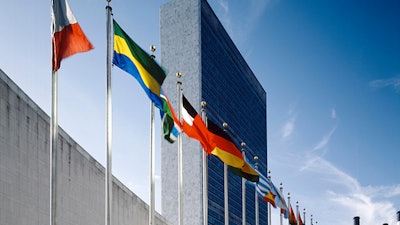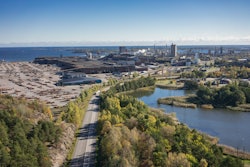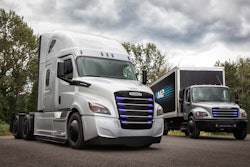
UN Secretary-General António Guterres has invited the world to a Climate Action Summit on September 23 to present concrete, realistic plans to reduce greenhouse gas to net zero emissions by 2050. There is still a window of opportunity to achieve a hold in the increase of global average temperature to well below 2 C and even, to 1.5 C above pre-industrial levels. The Summit will bring together governments, the private sector, civil society, local authorities and other international organizations to develop ambitious solutions
To demonstrate the importance of the industry for the transition to a sustainable and fossil-free society, the owners of the fossil-free HYBRIT (Hydrogen breakthrough ironmaking technology) initiative, SSAB (global leader in high-strength steels), LKAB (Europe’s largest iron ore producer) and Vattenfall (a leading European energy company), will participate in an events prior to the Climate Action Summit and during the Climate Week. SSAB President and CEO Martin Lindqvist was invited to speak at the climate meeting on September 23.
One of the prioritized action areas identified by the UN is the transformation of industry, and especially the so-called hard-to-abate sectors, such as steel. The steel industry is one of the highest CO2-emitting industries, accounting for 7% of CO2 emissions globally, 10% in Sweden. The HYBRIT mining-iron-steel-energy value-chain aims to develop the world’s first fossil-free ore-based steelmaking technology. By replacing coal with fossil-free electricity and hydrogen, HYBRIT technology will eliminate CO2 emissions, thus creating high potential to curb emissions and help the world to mitigate climate change.
Read more about the HYBRIT joint venture.
“The steel industry is seen as one of the 'hard to abate' sectors but we firmly believe that net zero emissions is possible. That’s why we took the initiative to create HYBRIT. Fossil-free steel has tremendous potential and could help many customer segments to truly become fossil-free. We believe that industry transition is positive both for the climate and for our industry’s competitiveness,” says Lindqvist.
“I think we can argue that HYBRIT is one of the most ambitious industrial transition projects globally today. All three companies have made commitments to be fossil-free already by 2045. We have a concrete timetable and through HYBRIT we have started construction and made investments to begin the transition. And we’re doing this with support from the Swedish government and together with academia,” says Jan Moström, LKAB President and CEO.
“We want to inspire others to take on a value-chain approach. Real change and new business opportunities require co-operation. Also, we hope large scale fossil-free hydrogen production and storage will enable us to find value-added for the renewable and fossil-free energy system and other industries,” says Magnus Hall, Vattenfall President and CEO.
In today’s ore-based steelmaking process, iron ore pellets are converted into metallic iron by reduction in a blast furnace. The iron oxide and carbon then react to form CO2 gases, as well as metallic iron. The iron is further processed before a semi-finished steel product is produced.
The HYBRIT process is based on direct reduction of iron ore using fossil-free electricity and hydrogen (H2). Hydrogen is produced by electrolysis of water using fossil-free electricity. The hydrogen reacts with the oxygen in the iron ore and metallic iron and H2O (water vapor) is formed.



















